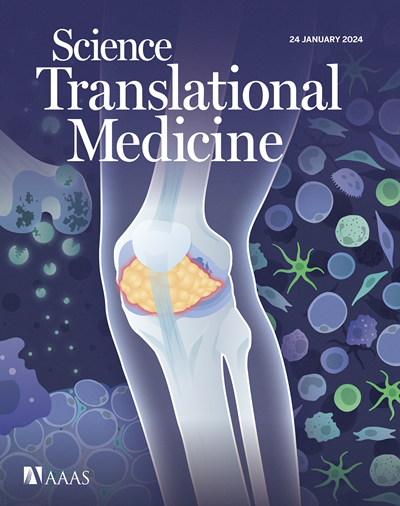Oligodendroglial precursor cells modulate immune response and early demyelination in a murine model of multiple sclerosis
IF 15.8
1区 医学
Q1 CELL BIOLOGY
引用次数: 0
Abstract
Reproducing the pathophysiology of human multiple sclerosis (MS) in animal models is critical to identifying mechanisms triggering demyelination and to developing early intervention strategies. Here, we aimed to model overactivated Wnt (wingless-related integration site) signaling previously shown in postmortem brain tissues of patients with MS by inducing experimental autoimmune encephalomyelitis (EAE) in PdgfraCreER;Apcfl/fl and Olig2Cre;Apcfl/fl mice. These mice have overactivated Wnt signaling in oligodendrocyte precursor cells (OPCs) because of a conditional knockout of the pathway repressor adenomatous polyposis coli (APC). PdgfraCreER;Apcfl/fl EAE mice exhibited increased expression of markers for Wnt activation such as Axis inhibition protein 2 (AXIN2) and Wnt inhibitory factor 1 (WIF1) in OPCs and showed exacerbated EAE progression in both the spinal cord and the brain. Genetic or antibody-mediated ablation of CC-chemokine ligand 4 (CCL4) prevented infiltration of CD4+ T cells and arrested disease progression in these mice. A characterization of CNS (central nervous system) immune cell clusters identified an augmented subpopulation of NK1.1+CD11b+Gr-1+ cytotoxic macrophages in PdgfraCreER;Apcfl/fl EAE mice. Microinjection of this subpopulation of macrophages into the brains of wild-type C57/B6J mice was sufficient to induce demyelination. Ablation of CD4+ T cells prevented the effects of Wnt overactivation on demyelination and immune cell infiltration. Antagonizing chemokine receptor 5 (CCR5) using a European Medicines Agency–approved drug, maraviroc, reduced immune cell infiltration, alleviated demyelination, and attenuated EAE progression. We found an OPC-orchestrated immune cellular network that instigates early demyelination, provides insight into MS pathophysiology, and suggests avenues for early interventions.
少突胶质前体细胞调节免疫反应和小鼠多发性硬化模型中的早期脱髓鞘现象
本文章由计算机程序翻译,如有差异,请以英文原文为准。
求助全文
约1分钟内获得全文
求助全文
来源期刊

Science Translational Medicine
CELL BIOLOGY-MEDICINE, RESEARCH & EXPERIMENTAL
CiteScore
26.70
自引率
1.20%
发文量
309
审稿时长
1.7 months
期刊介绍:
Science Translational Medicine is an online journal that focuses on publishing research at the intersection of science, engineering, and medicine. The goal of the journal is to promote human health by providing a platform for researchers from various disciplines to communicate their latest advancements in biomedical, translational, and clinical research.
The journal aims to address the slow translation of scientific knowledge into effective treatments and health measures. It publishes articles that fill the knowledge gaps between preclinical research and medical applications, with a focus on accelerating the translation of knowledge into new ways of preventing, diagnosing, and treating human diseases.
The scope of Science Translational Medicine includes various areas such as cardiovascular disease, immunology/vaccines, metabolism/diabetes/obesity, neuroscience/neurology/psychiatry, cancer, infectious diseases, policy, behavior, bioengineering, chemical genomics/drug discovery, imaging, applied physical sciences, medical nanotechnology, drug delivery, biomarkers, gene therapy/regenerative medicine, toxicology and pharmacokinetics, data mining, cell culture, animal and human studies, medical informatics, and other interdisciplinary approaches to medicine.
The target audience of the journal includes researchers and management in academia, government, and the biotechnology and pharmaceutical industries. It is also relevant to physician scientists, regulators, policy makers, investors, business developers, and funding agencies.
 求助内容:
求助内容: 应助结果提醒方式:
应助结果提醒方式:


